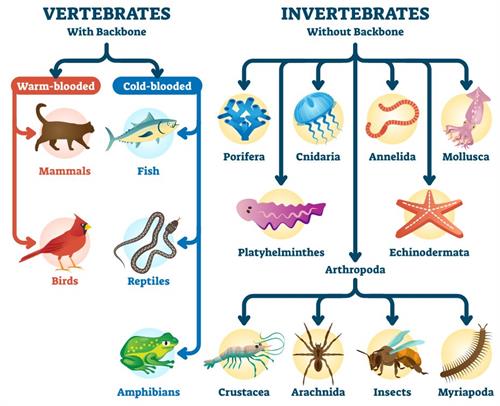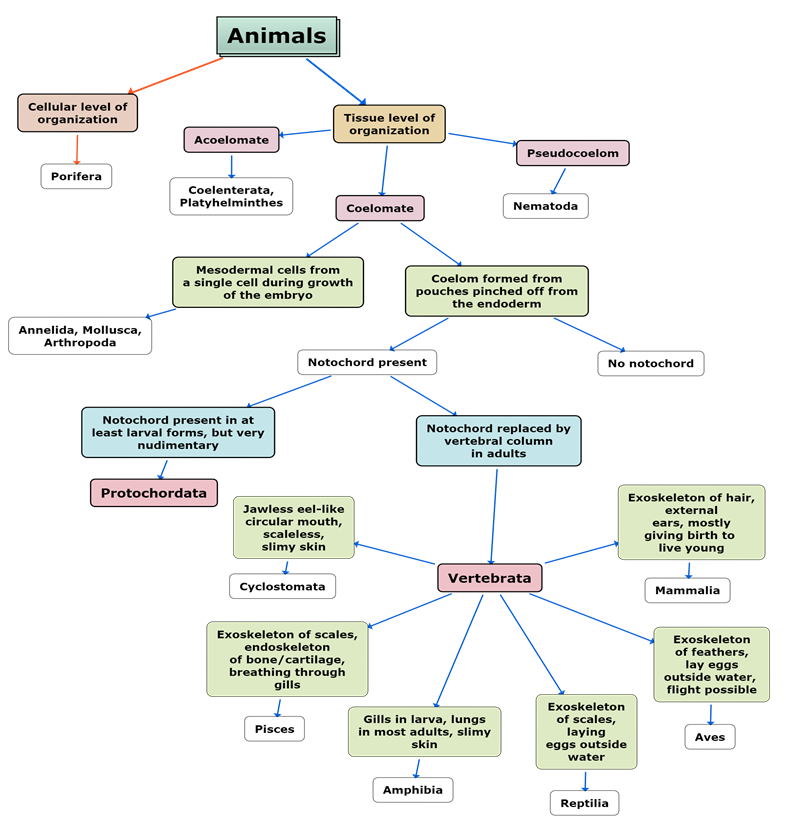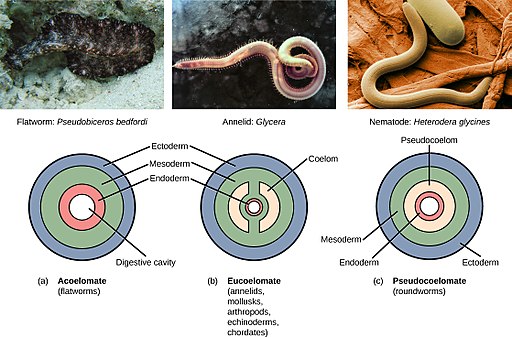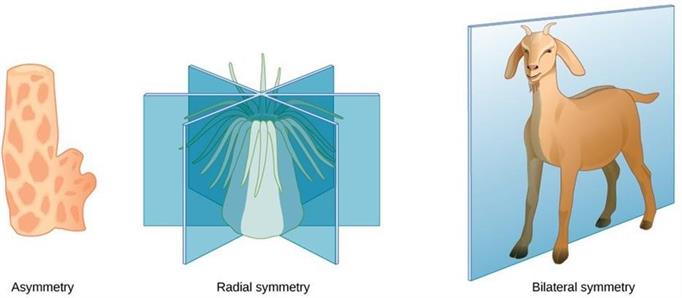PDF chapter test TRY NOW
Animalia:
All the multicellular eukaryotic organisms which lack cell walls belong to the kingdom Animalia.

Classification of animals
These organisms are heterotrophic, and hence they rely on other organisms for their food. Most of the animals can move, unlike plants. They have a growth pattern by which the adult animals have a specific shape and size.
The majority of the animals have well-defined organ systems such as respiratory system, digestive system, excretory system etc., They also have a nervous system to respond to an external stimulus.
Based on the differences in their body type and design, animals are further classified.

Classification of animals
Coelom
The fluid-filled body cavity found between the alimentary canal and the body wall is known as coelom.
Based on the presence of a body cavity, the animals are categorised as follows:
- Coelomates: The animals which have a true body cavity.
- Pseudocoelomates: The animals which have a false body cavity.
- Acoelomates: The animals which do not have a body cavity at all.

Types of coelom in animals
Body symmetry
The presence of body parts, in size, shape, and relative position, on opposite sides of a dividing line in the living organisms is known as body symmetry. Animals are classified based on their body symmetry into three types. They are as follows:
- Radial symmetry: A symmetry in which the sides exhibit regularity of parts around a central axis is known as radial symmetry.
- Bilateral symmetry: The form of symmetry in which the opposite sides are similar
- Asymmetry: The lack or absence of symmetry

Types of symmetry
